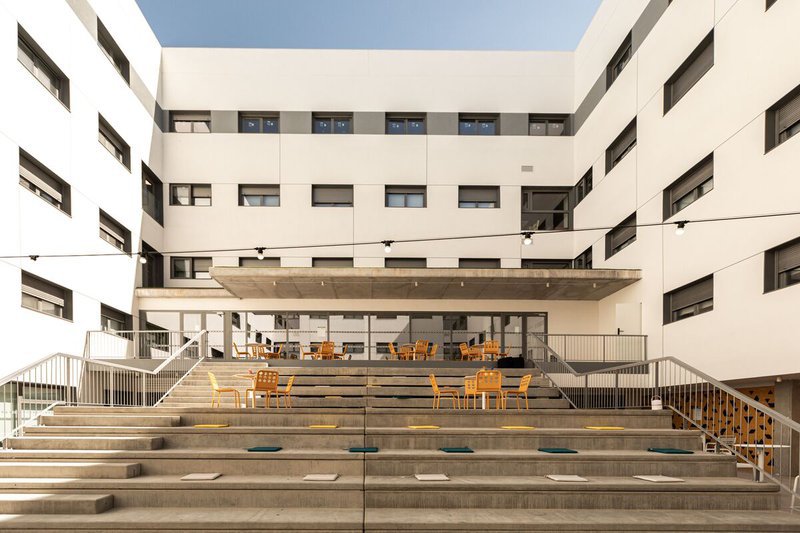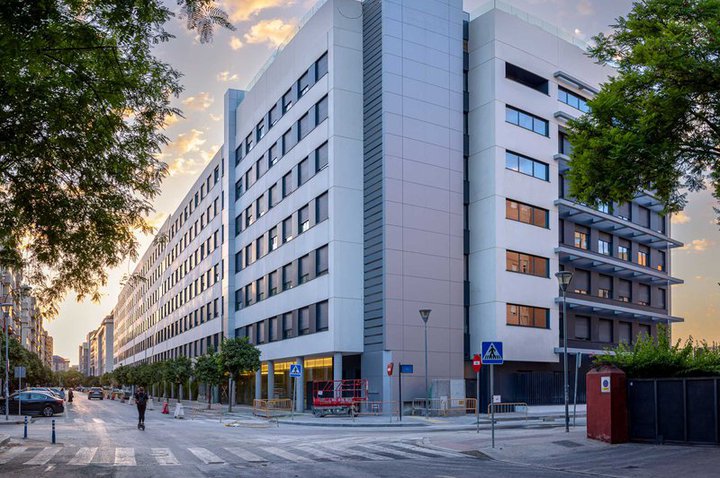The student housing market in Spain has undergone a major transformation in recent years. The mobility of both national and international students is increasing, a fact that is coupled with greater interest from investors, in search of greater diversification in their portfolios, and the great liquidity that exists in the capital market.
As stated in the report Student residences. Radiography of a growing sector prepared by the international real estate consultancy firm JLL, the number of students enrolled in universities rose slightly during the 2021-2022 academic year to 1,690,947 students (+0.7% year-on-year), according to data from the Ministry of Universities. Of these, 1,398,782 (+0.5% year-on-year) were enrolled in on-campus universities.
In terms of demand, it is important to take into account the number of students travelling from other provinces in Spain to study, which has increased by 6.4% for the 2020/2021 academic year. Also, with regard to foreign students, the number of students enrolled in Spanish on-campus universities fell during the academic year 2020-2021 as a result of the health crisis, and will subsequently register a new record in the academic year 2021-2022. As for the Erasmus programme, although during 2019-2020, the last academic year for which data are available, Spain received 9% fewer students as a result of the pandemic, it is one of the favourite countries for students in the programme.
Supply is growing, but remains insufficient
In terms of supply, at the end of 2021, there were a total of 102,707 places in Spain, distributed among 1,075 university residences and halls of residence. This represents an increase in the number of places of 5.6% (+5,442 places) compared to the previous year.
By cities, Madrid is the autonomous community with the highest number of places, with 21.1% of the total. It is followed by Andalusia, with 15.7%, Catalonia, with 14.9%, and Castile and Leon (12.7%), with these four autonomous communities accounting for 64.4% of the total capacity.
It is estimated that by the year 2025 the total capacity will increase to around 123,000 beds. The new supply will not be exclusive to the main cities (Madrid and Barcelona), but will spread throughout Spain.
However, despite the increase in the supply of beds, it is still insufficient to cover the potential demand among university students. In this sense, if the supply of beds in 2021 was 102,707 places, the total number of students during the 2020-2021 academic year was almost 1.4 million, which leaves a rate of 14 students per bed, or a provision rate of 7.3%.

Investment market
By the end of 2022, investment in student residences will have reached 1.5 billion euros, a milestone marked by the acquisition of the RESA portfolio by PGGM. Thus, Dutch investors, with 27% of the total number of operational beds and beds in the pipeline, are the largest holders at national level, followed by the Americans, with 22%. The weight of Spanish investors in the stock of operational beds is 9%.
By type of investor, fund managers account for 46% of the operational and under construction product, followed by pension funds, which represent 28%.
Currently, Resa, MiCampus, Livensa Living, GSA-Yugo and Xior Student Housing are the five operators with the largest number of beds under management. They are followed by the Universitat Autónoma de Barcelona, which is the public entity with the largest number of beds under management.
Madrid and Barcelona account for most of the investment in Spain (57% from the last quarter of 2021 to the third quarter of 2022), but investment activity is increasingly intense in other provinces with leading university centres such as Seville, Valencia, Granada, Zaragoza, Malaga and Salamanca, among others. It is worth highlighting, for example, the intense investment activity in Seville, which since 2021 has been, after the Community of Madrid, the province with the highest number of registered operations, with a total of six operations totalling a volume of more than €110 million.
The current reality of the market is marked by the scarcity of product for sale, which is driving investors to buy future residential projects or those under construction. In this regard, 34% of investment since the last quarter of 2021 has been made under forward purchase or forward funding structures.
Juan Manuel Pardo, Director of Living at JLL Spain, commented: "Following the trend of recent years, it is expected that the PBSA sector in Spain will continue to mature and consolidate, taking into account that it is a market that still has a long way to go. The current liquidity in the capital markets, coupled with the strong fundamentals of this sector, makes it one of the most resilient asset classes in terms of value adjustments caused by the current situation of inflation and rising interest rates. PBSA investment is expected to continue to grow in 2022 and beyond, while gaining in importance as a share of total real estate investment.

